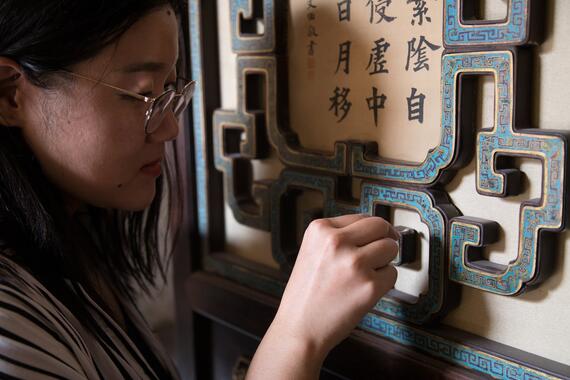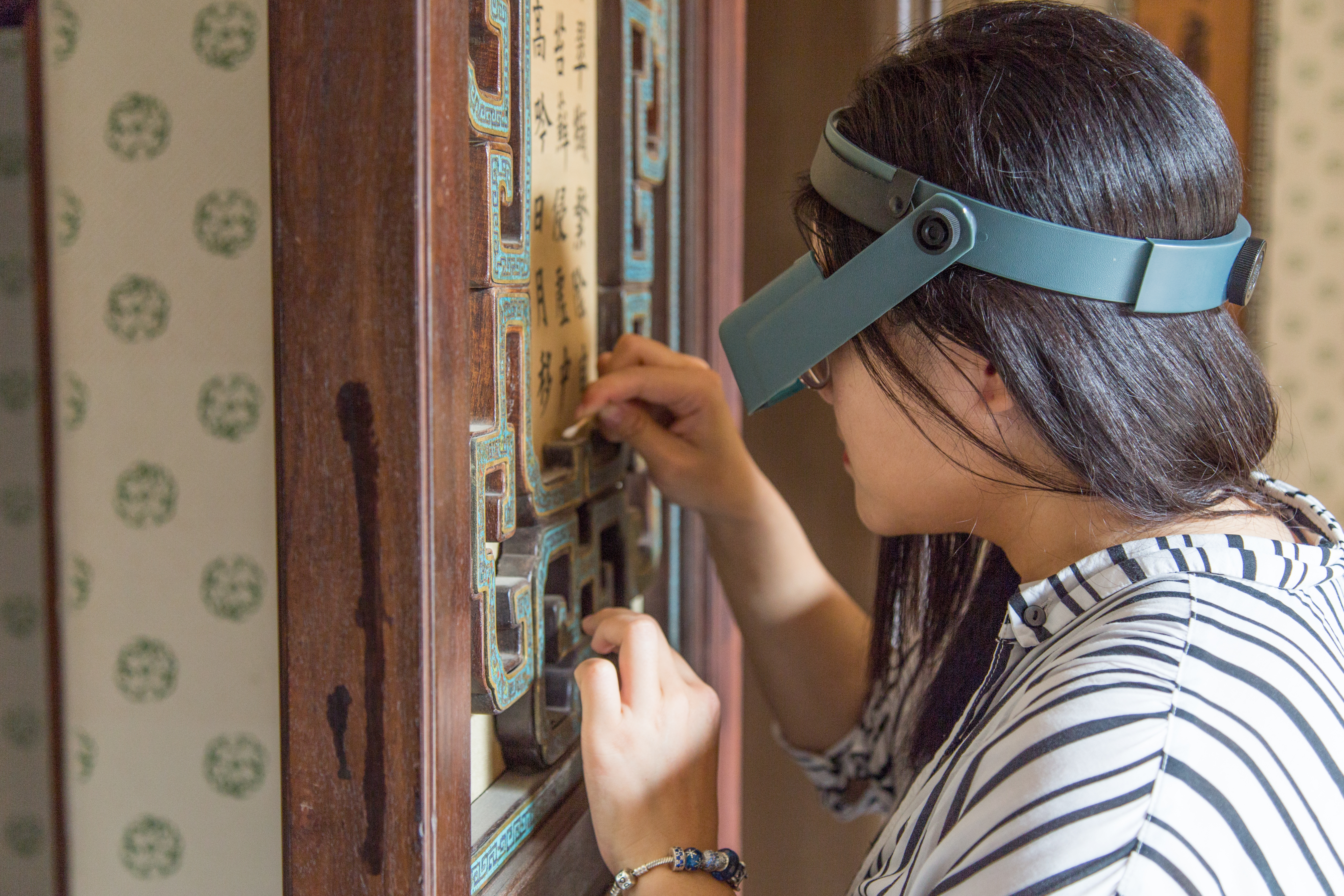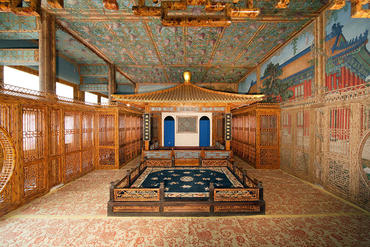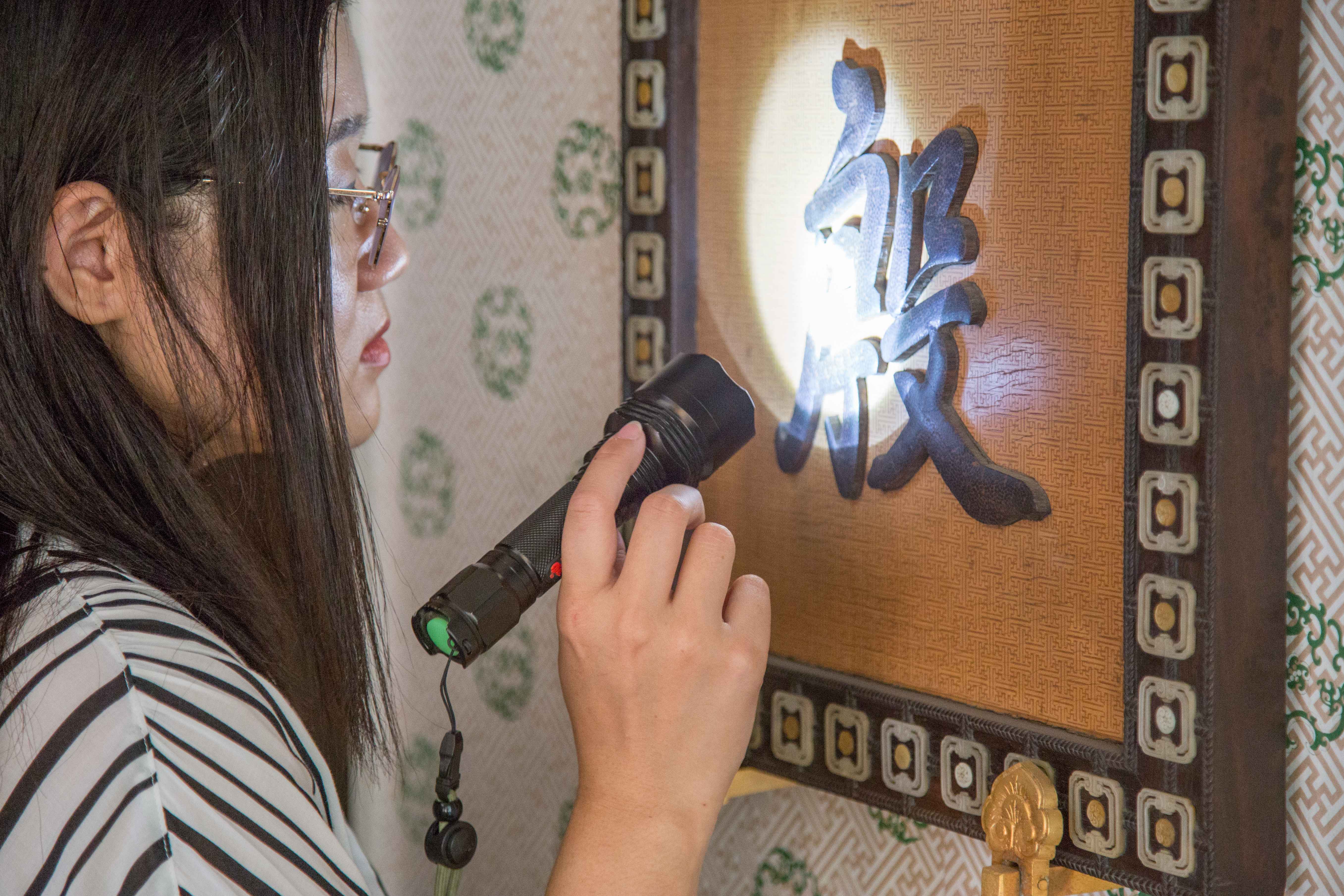From Student to Teacher

It was 2013, and Liu Renhao was pursuing her architecture degree at Beijing’s Tsinghua University. When she began her internship in the Department of Architectural Heritage at the Palace Museum, which has called the magnificent Forbidden City home since 1925, she assumed she would be working on construction drawings of the iconic complex. Instead, she was tasked with a condition survey of the Building of extended Delight in the Qianlong Garden, one of World Monuments Fund’s largest projects encompassing 27 structures. That’s when she knew she would become an architectural conservator.
“The first time I stood inside the Studio of Exhaustion from Diligent Service within the Qianlong Garden, I was deeply moved. I saw the most splendid, historic craftsmanship, and its careful conservation. I saw the repainting of the wooden balustrades, done by hand to resemble bamboo. I saw the reproduction of the embroidery using the same materials and techniques as our ancestors. And then I thought, this is what I want to do.”

Soon after, Renhao enrolled in the first class of a graduate degree program in conservation at Tsinghua University—a new layer to the CRAFT program (Conservation Resources for Architectural Interiors, Furniture, and Training) initially launched by WMF and the Palace Museum in 2011, which utilizes the Qianlong Garden as a conservation learning laboratory. Earlier this year, Renhao, now 27, came full circle when she was hired as an architect at the Qianlong Garden and the first Local Conservator in Residence of the CRAFT program. But it was her journey in between that made all the difference.
“CRAFT is not just a training program,” said Renhao, who believes a lack of local trained conservators has been a great threat to her country’s heritage. “In Beijing alone, there are seven UNESCO World Heritage Sites. But there was no conservation bachelor’s program in China until the 1990s. Even now, only three colleges offer conservation degrees.” CRAFT addresses the issue by combining scientific conservation approaches with China’s long history of craftsmanship to build local capacity of the highest standards. “We need our own conservators who have been well-trained and who will work in China for a long time,” she said.
The Qianlong Garden within Beijing’s iconic Forbidden City could not make a better backdrop for such an education. The garden’s 27 structures across four courtyards represent some of the most significant, exquisitely designed interiors to survive relatively unchanged from imperial China. WMF began conservation at the site in 2001, and is working towards completion in 2020 to coincide with the 600th anniversary of the Forbidden City.

But it wasn’t just the setting that had an impact on Renhao during her time at CRAFT. Her experience, she said, would not have been the same without the unmatched team of experts and instructors that guided her class. “It’s not only the theory or science they introduced, but also the way they thought and made decisions, the way they treated objects and the way they treated us,” said Renhao. “The new technologies are interesting, but you can always learn them somewhere. The experience of these trained conservators, however, the stories of their lives, are something only CRAFT provides.”
Renhao credits her access to instructors from around the world with helping her build the confidence to seek another degree in conservation at University College London. “Renhao’s training at CRAFT and her return to China following her continuing studies mark a turning point in the field of object and architectural conservation,” said Professor Liu Chang, Director of the Institute of Architectural Theory and Architectural Heritage Preservation at Tsinghua University’s School of Architecture. “Not only am I expecting her long service at the Palace Museum, I am expecting service at a level beyond my imagination—as a conservator, a project manager, and a comprehensive designer.”

Today Renhao is one of four CRAFT graduates employed as full-time conservators at the Qianlong Garden. She is currently leading 13 students into their second year of CRAFT, and by 2019, 47 students will have successfully completed the program. As she reflects on her growth at such a young age, Renhao considers the Pavilion of Achieving Hopes within the Qianlong Garden to be the perfect lens. “When I first came into the Pavilion as an intern, it was still an old building filled with dust. When I returned as an employee, the physical restoration work was almost done. The panels that I had cleaned during CRAFT were hanging on the wall, the screens had been replaced,” she said. “And now I continue to work in the Pavilion, researching how the furniture and panels were placed, monitoring the environmental data. It is interesting to look at all of this and see the progress I made. You know, I think that the Palace Museum and the Qianlong Garden have kind of witnessed my life.”
Qianlong Garden and the CRAFT program are generously supported by The Brown Foundation, Inc. of Houston/Mrs. Nancy Brown Negley, the Freeman Foundation, British American Tobacco, The Starr Foundation, The Tiffany & Co. Foundation, and Anonymous. Additional support is provided by Mrs. Catherine Curran, Mr. and Mrs. Peter Kimmelman, and Wilson and Eliot Nolen.
To read more stories from the 2019 Watch Magazine, click here.
